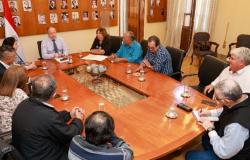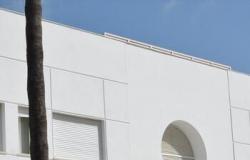By INTA.
The carbon footprint allows us to know the environmental impact of products and activities in the face of climate change and helps promote the design of mitigation strategies towards more environmentally friendly processes.. With this objective, INTA in Northern Patagonia and the Banco Credicoop Foundation launched the program “Growing Cooperating: Transition towards regenerative agriculture to reduce environmental impact” to implement an agricultural strategy capable of mitigating and capturing or removing greenhouse gases ( GHG) on the properties of small and medium-sized fruit growers in the Upper Valley of the Negro River.
Eduardo Ciancio – director of the Banco Credicoop Foundation – explained that “this program seeks the adoption of innovations in processes and inputs that favor more environmentally friendly production, which is what the markets demand today,” and remarked: “We are interested in young students and women in the sector taking center stage in these types of projects. and that they achieve decisive changes in their productive systems.”
For Mariana Amorosi – director of INTA Patagonia Norte – “This program is possible thanks to public-private relationships and articulated work which for decades has been developed between researchers, extension workers and producer cooperatives.”
For his part, Sergio Riskin – president of the First Fruit Cooperative of Río Negro – said: “we decided to participate in this program because, among the cooperative principles, is the commitment to the community in caring for the environment that involves concrete actions such as measuring the carbon footprint”.
Thinking about regenerative production models is key in a global context that demands products that have a lower environmental impact during their life cycle.
Thinking about regenerative production models is key in a global context that demands products that, during their life cycle, have a lower environmental impact and, at the same time, promote biodiversity and the study of natural processes with their interactions.
Sergio Romagnoli – INTA Alto Valle specialist and technical reference for the program – highlighted that The climatic, edaphic and productive characteristics of fruit growing in the Upper Valley give it enormous potential for carbon capture or removal in its fruit forests., achieving a comparatively low carbon footprint for its productions, compared to countries and regions with similar production systems. For this reason, it is appropriate to record and systematize this information to adequately communicate it to interested parties.
In addition, the researcher indicated that they will begin with monitoring and a data survey from the previous season with the objective of knowing the carbon footprint and the carbon baseline in soils in order to establish lines of work and improvement plans in those fields. . “To monitor the evolution of the carbon footprint in each of the fruit forests in which we will work, it will be necessary to develop a specific carbon footprint calculator for fruit growing.”, he remarked.
It will be necessary to develop a specific carbon footprint calculator for fruit growing.
Sergio Romagnoli –INTA Alto Valle specialist and technical reference for the program–.
Finally, he highlighted that this initiative presents a work modality especially articulated with researchers and extension workers from INTA Alto Vallemembers of the cooperative’s technical team and Hugo Ariel Lorenzo, as direct technical advisor for the program’s producers.
Within the framework of this program, technical training will be carried out on practices and technologies that mitigate GHG emissions and enhance carbon sinks in soils and forest biomass. Some of the technologies and practices aim at the implementation of forest curtains, improving irrigation and fertilization efficiency, promoting green covers for better soil management, implementing biological pest management, the use of anti-hail nets and the application of frost defense systems.
In a first stage, We will work with small fruit producers (mainly pears and apples) belonging to the La Primera Cooperative (Gral. Roca).
About the program
In February 2024, the Banco Credicoop Foundation signed the agreement with the Inter-American Development Bank (Multilateral Investment Fund “IDB Lab”), to implement the program that promotes regenerative agriculture practices among producers and small agricultural cooperatives through awareness actionstraining, technical assistance and linkage with the carbon credit market.
The first stage of the program will work on raising awareness about the virtues of regenerative agriculture, and will also offer technical advice and training.. During the second stage, an incentive and financing scheme will be implemented so that producers can make the necessary investments for the transition.

The project will also try to facilitate producers’ access to carbon markets so that they can recover the investment made by monetizing their lower environmental impact.. “This will be achieved by linking producers, through their cooperatives, with technical teams, as well as with the emerging entrepreneurial ecosystem that is developing solutions for measuring carbon footprint, certification and linking with bond markets,” they explained from the Banco Credicoop Foundation.










